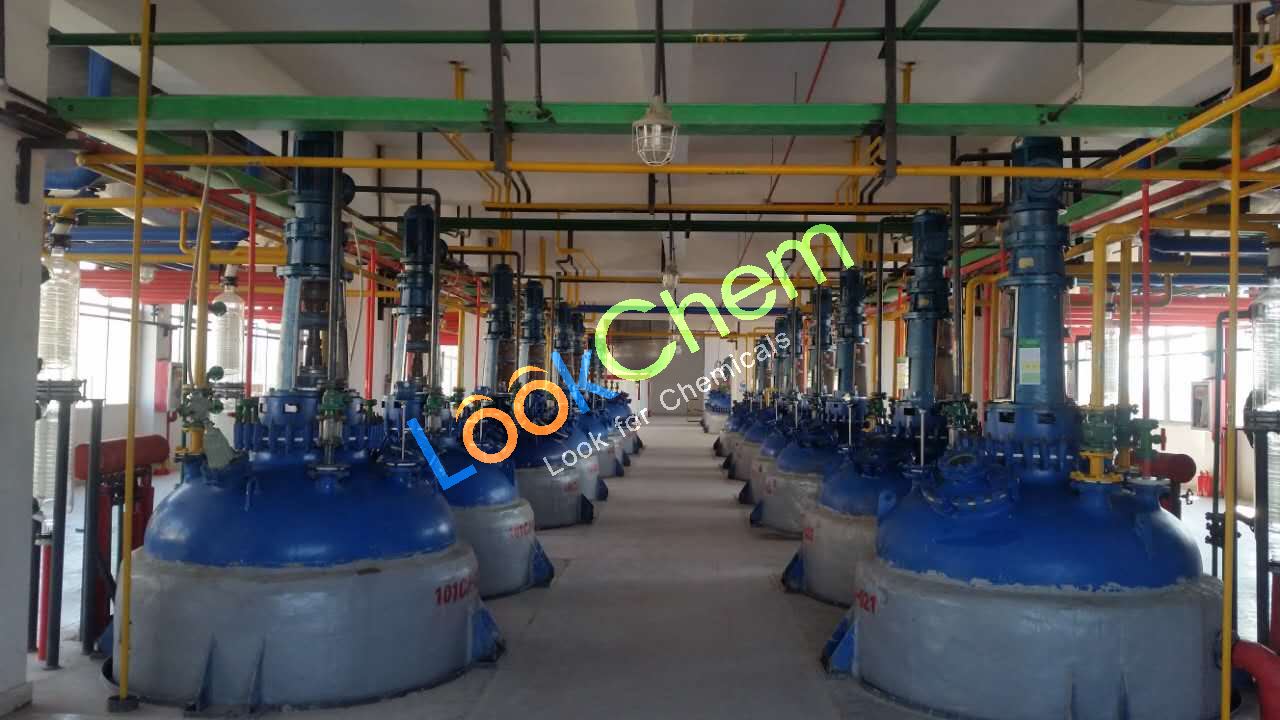- Min.Order :1 Gram
- Purity: 99.5%,99%
- Payment Terms : L/C,D/A,D/P,T/T
Keywords
epoxy resin Tosylamide Parahydroxybenzaldehyde
Quick Details
- Appearance:Yellowish or white powder
- Application:Intermediate of medicine or perfume
- PackAge:1g, 25kg, 200kg or per request depending on different products
- ProductionCapacity:500|Metric Ton|Year
- Storage:cool and seal
- Transportation:By express (Door to door) such as FEDEX, DHL, EMS for small amount. By air(airport to airport) or by sea LCL/FCL for large amount.
Superiority:

Details:
SECTION 1: HAZARDS IDENTIFICATION Signal Word: Warning GHS Classification Physical Health Environmental OSHA Combustible Dust None None GHS Label Symbols: No symbol Hazard Statements May form combustible dust concentrations in air. Precautionary Statements None HAZARDS NOT OTHERWISE CLASSIFIED: None identified.
SECTION 2: COMPOSITION/ INFORMATION ON INGREDIENTS HAZARDOUS INGREDIENTS CAS # % CLASSIFICATION H CODES Tosylamide-epoxy Resin Proprietary 100 OSHA Combustible Dust None (See Section 8 for Exposure Limits)
SECTION 3: FIRST-AID MEASURES SYMPTOMS OF EXPOSURE ACUTE Temporary mild skin or eye irritation. DELAYED Stinging, tearing, redness and swelling of the eyes. Redness or burning of the skin. INHALATION Not applicable, unless heated past the decomposition point or dust is allowed to accumulate in the air while handling. If so, remove to fresh air. SKIN CONTACT Mildly irritating to the skin. Wash thoroughly with soap and water. If skin irritation persists consult a doctor. EYE CONTACT Mildly irritating to the eyes. Wash with plenty of water for 15 minutes. Consult a physician. Polytex E-100 Page 2 of 5 INGESTION If ingested, seek medical attention. SPECIFIC TREATMENT No other specific treatments are known or have been identified.
SECTION 4: FIRE FIGHTING MEASURES FLAMMABILITY CLASSIFICATION OSHA Combustible Dust FLAMMABLE LIMITS No test data available HAZARDOUS COMBUSTION PRODUCTS Carbon monoxide and carbon dioxide. EXTINGUISHING MEDIA Dry Chemical, Water Fog, CO2 UNUSUAL FIRE AND EXPLOSION HAZARDS May represent a combustion hazard if dust from this material is allowed to accumulate in the air. SPECIAL FIRE FIGHTING PROCEDURES None known. SPECIAL PROTECTIVE EQUIPMENT AND PRECAUTIONS FOR FIRE FIGHTERS As in any fire, wear self-contained positive-pressure breathing apparatus, (MSHA/NIOSH approved or equivalent) and full (Bunker) protective gear.
SECTION5: ACCIDENTAL RELEASE MEASURES PERSONAL PRECAUTIONS Avoid contact with skin, eyes and clothing. PROTECTIVE EQUIPMENT See Personal Protective Equipment in Section 8. EMERGENCY PROCEDURES Avoid unnecessary exposure to bystanders, prevent contact with open flames or other ignition sources. ENVIRONMENTAL PRECAUTIONS Obey relevant local, state, provincial and federal laws and regulations. Do not allow the product to enter public drainage systems or open water courses. METHODS AND MATERIALS FOR CLEANING UP Avoid creating excessive dust while collecting. Sweep or scoop into a suitable container for disposal.
SECTION 6: HANDLING AND STORAGE PRECAUTIONS FOR SAFE HANDLING Do not allow dust to concentrate in the air from handling. If necessary, use local ventilation. Handle in accordance with good industrial hygiene and safety practice. CONDITIONS FOR SAFE STORAGE Store in cool areas. Keep containers closed.
SECTION7: EXPOSURE CONTROLS/PERSONAL PROTECTION INGREDIENTS CAS # % ACGIH TLV OSHA PEL Tosylamide-epoxy Resin Proprietary 100 None established None established APPROPRIATE ENGINEERING CONTROLS None required. PERSONAL PROTECTIVE EQUIPMENT EYE/FACE Safety glasses or goggles. SKIN Impervious protective gloves and clothing as appropriate to avoid skin contact. RESPIRATORY An appropriate NIOSH approved respirator for Dust. HYGIENE MEASURES Handle in accordance with good industrial hygiene and safety practices. When using, do not eat, drink or smoke. Wash face and hands before breaks and at the end of work. Wash contaminated clothing before re-use.
SECTION 8: PHYSICAL AND CHEMICAL PROPERTIES APPEARANCE Clear solid resin ODOR Very mild, esteric ODOR THRESHOLD No test data available pH No test data available MELTING POINT No test data available BOILING POINT/RANGE >200 °C FLASH POINT Over 200 °F EVAPORATION RATE No test data available Polytex E-100 Page 3 of 5 FLAMMABILITY OSHA Combustible Dust FLAMMABLE LIMITS LOWER No test data available UPPER No test data available VAPOR PRESSURE No test data available VAPOR DENSITY No test data available RELATIVE DENSITY 1.27 @ 25 °C SOLUBILITY IN H2O Not readily soluble PARTITION COEFFICIENT (n-octanol/water) No test data available AUTOIGNITION TEMPERATURE No test data available DECOMPOSITION TEMPERATURE > 250 °C VISCOSITY No test data available % VOLATILE 2 Maximum SOFTENING POINT 70 – 76 C
SECTION 9: STABILITY AND REACTIVITY REACTIVITY This product does not pose a significant reactivity hazard when stored appropriately (see Section 6). STABILITY This product is stable when stored appropriately (see Section 6). CONDITIONS TO AVOID Excessive heat and open flame, material dust accumulation. INCOMPATIBILE PRODUCTS Strong oxidizing or reducing agents. HAZARDOUS DECOMPOSITION PRODUCTS Carbon dioxide and carbon monoxide. POSSIBILITY OF HAZARDOUS REACTIONS Will not occur
SECTION 10: TOXICOLOGICAL INFORMATION SYMPTOMS OF EXPOSURE ACUTE Temporary mild skin or eye irritation. Coughing. DELAYED Stinging, tearing, redness and swelling of the eyes. Redness or burning of the skin. Irritation of the lungs and airways. ACUTE TOXICITY INHALATION May be mildly irritating. SKIN In some cases, eye contact will cause mild, but reversible, irritation. EYES In some cases, skin contact will cause mild, but reversible, irritation. INGESTION Not likely to have harmful effects in normal exposures, may cause nausea or gastric distress if ingested in quantity. INHALATION TOXICITY LC50 Rat Not established DERMAL TOXICITY LD50 Rat Not established SKIN IRRITATION Draize, Rabbit, 24 hours Not established EYE IRRITATION Draize, Rabbit, 24 hours Not established ORAL TOXICITY LD50 Rat Not established SENSITIZATION Draize, Rabbit Not established CHRONIC EFFECTS CARCINOGENICITY Not listed as a carcinogen by ACGIH, IARC, NTP, or CA Prop 65 MUTAGENIC EFFECTS None known REPRODUCTIVE TOXICITY None known TARGET ORGAN EFFECTS None known
You Might Also Like
Related Searches
About|Contact|Cas|Product Name|Molecular|Country|Encyclopedia
Message|New Cas|MSDS|Service|Advertisement|CAS DataBase|Article Data|Manufacturers | Chemical Catalog
©2008 LookChem.com,License: ICP
NO.:Zhejiang16009103
complaints:service@lookchem.com Desktop View